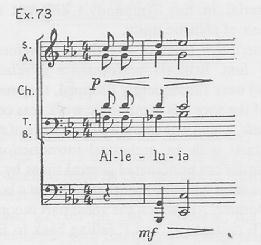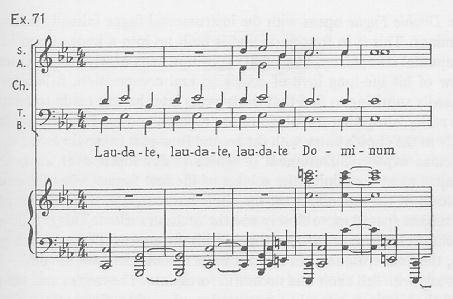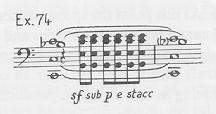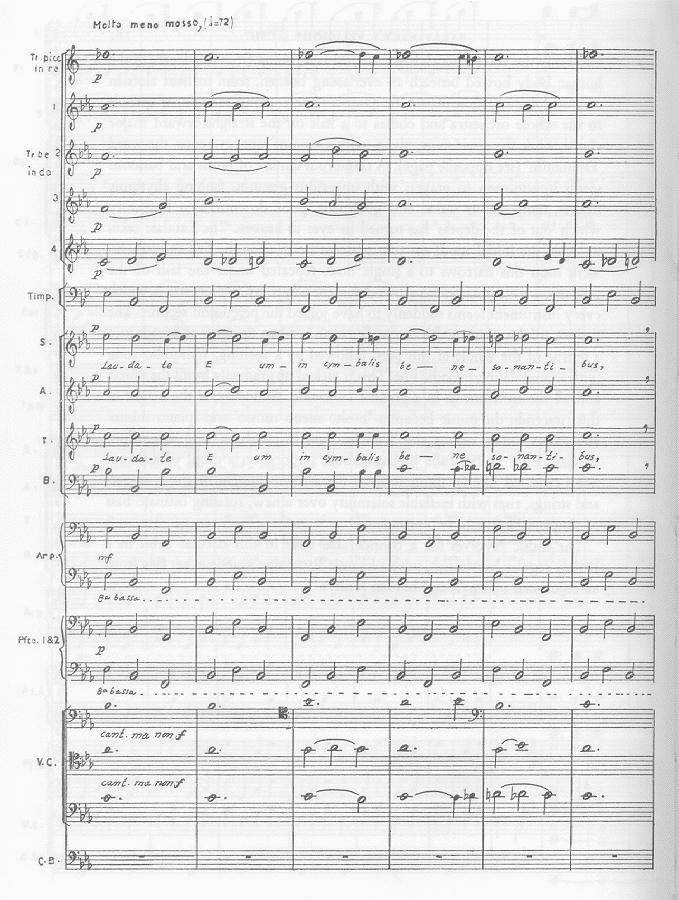
Contrasting musical motifs give rise to the expressiveness of this movement. Unlike final movements that are composed in the eighteenth and nineteenth centuries, there is no sense of triumph in the Alleluia that is stated at the beginning of the movement. Rather there appears to be a sense of relief in the motif, highlighted by a crescendo and immediate decrescendo.

The Laudate begins slowly also, with the 'D-E fl-B fl' figure repeating slowly over the timpani, harp, and two pianos. As in the other movements, the pianos are substitutes for the violins and violas.

The choir frees itself from its chains and rises, being joined eventually by the whole orchestra and stopping on a major chord. The choir then goes into a prayerful piano chant of Dominum.
A fanfare of horns and bassoons then erupts, with grandeur and immediacy. The fanfare carries scales and glissandos and numerous rhythmic figures, especially the woodwind triplet figure which sudden appears and just as quickly subsides.

The Laudate Eum in sono tubae takes up again the initial motif on two adjacent notes as in the first movement, but now in major seconds.. Very soon this narrows to a single note, all under the watchful eye of the percussion that is accentuated by the seemingly untuned orchestra.
The sighing Alleluia is again repeated in a short passage. There is a dramatic pause in the music, which Stravinsky uses in other works, especially in the Postlude of his Requiem Canticles. The feeling of awe and reverence is instantly remembered in the midst of the devout frenzy.
The return of the triplet motif with appregios and horn calls signals the section that, in Stravinsky's own words, was inspired "by a vision of Elijah's chariot climbing the Heavens. Never before had I written anything quite so literal as the triplets for horns and piano to suggest the horses and chariot (Craft, Dialogues)."
This is followed by a song with an undulating melodic line. The voices join in and lift it in a crescendo, when the music becomes molto meno mosso and piano subito and enters the Laudate Eum in cymbalis bene sonantibus.
Solemnly, the motif is intoned to trumpets and strings, over the timpani, harp, and twin piano ostinato. This section is then developed in a swirling fashion. The bass, consisting of the harp, two pianos, and timpani, accompany in an ostinato of falling and rising fourths.

The last echo of the opening Alleluia lead to the unison Laudate as in the beginning of the movement.
[ Index | Biography | Symphony of Psalms | Mass | Requiem | Links ]